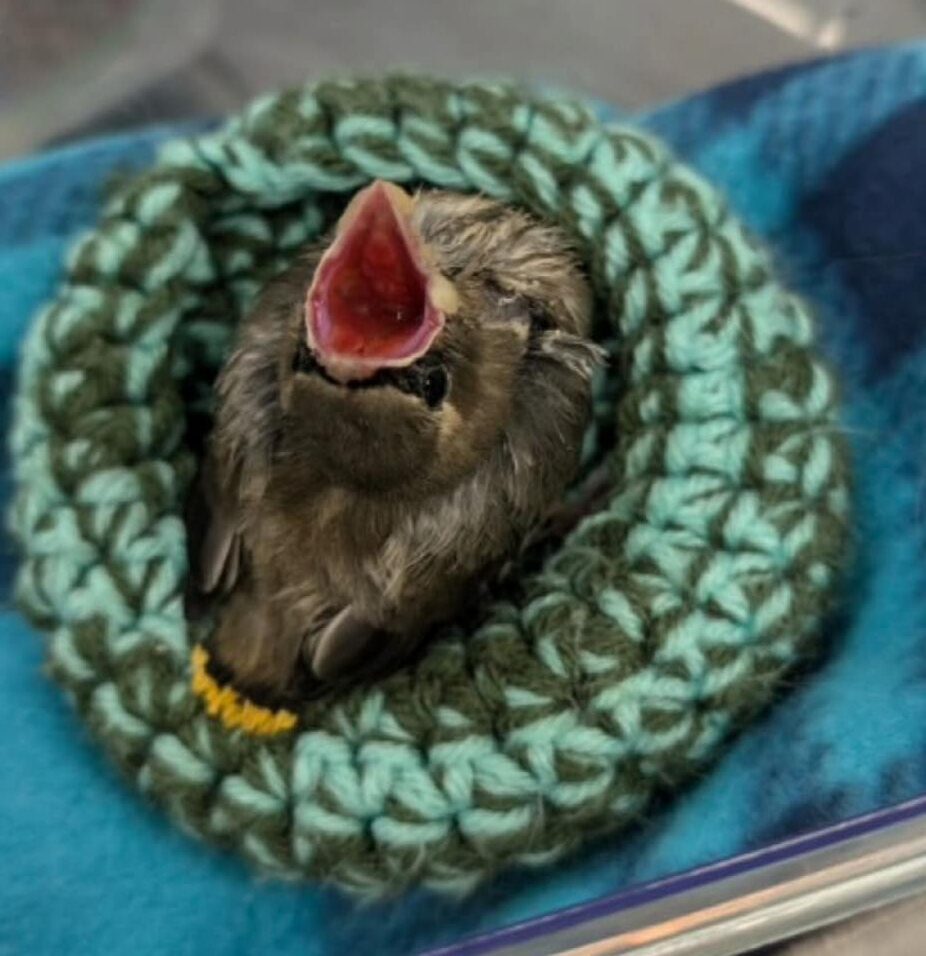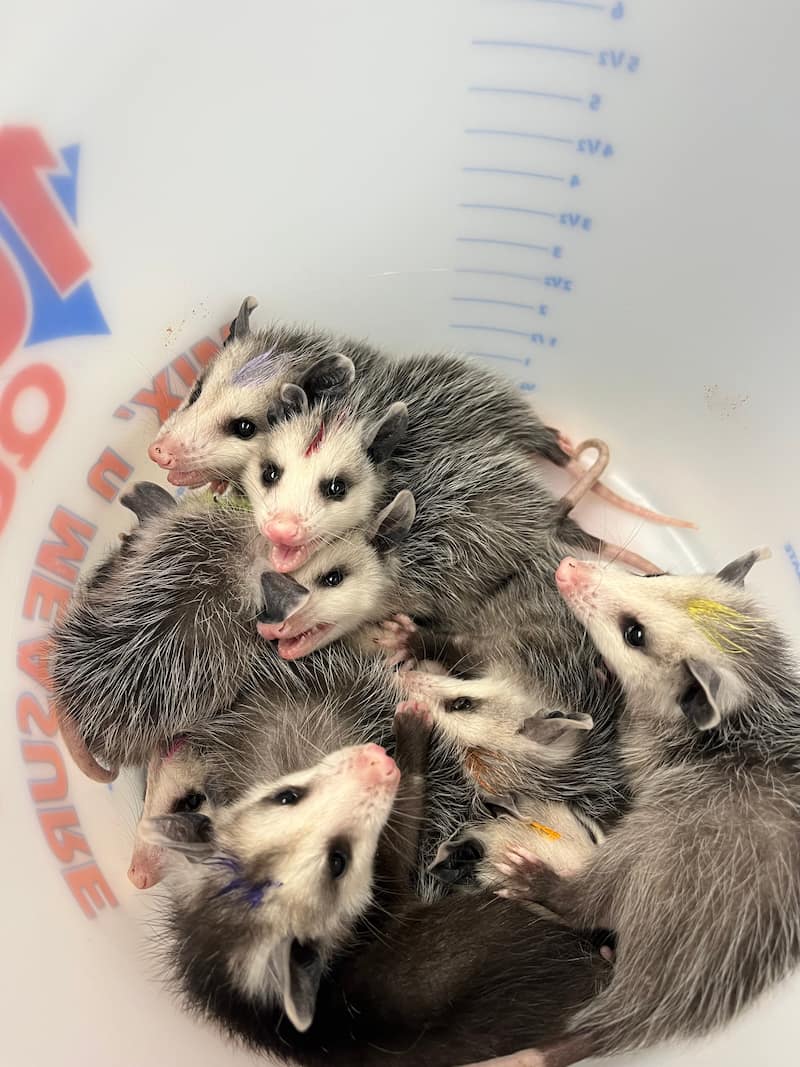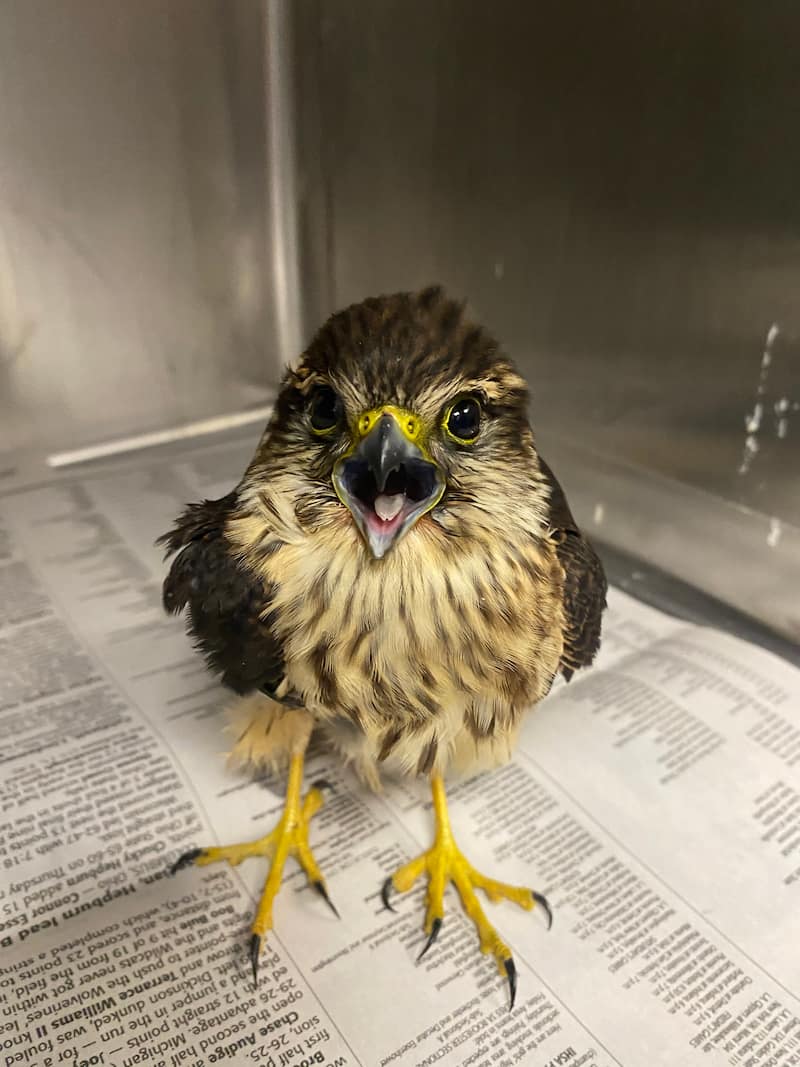by Stephanie Zec
Many hours volunteering at the Wildlife Medical Clinic (WMC) has made it my home, and my team of volunteers have become my vet-school family. As I approach the beginning of my fourth year, the transition to working in the teaching hospital will be bittersweet as I will have to leave the WMC. These are my top five wildlife lessons that I have learned from my time at the clinic.
1. Bigger is not badder.
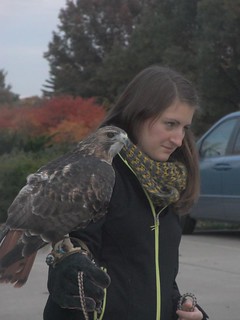 Many of our volunteers become anxious when they are expected to work with an adult raccoon or an adult Great Horned Owl – the largest owl found in Illinois. In reality, they should be equally conscious of safety precautions when working with some smaller species. When we perform medical procedures on our resident birds, it is often times the kestrels that draw blood on our volunteers. Even smaller animals that do not appear intimidating can be dangerous. Despite taking the proper precautions, the most common bite injury in the Wildlife Medical Clinic is due to squirrels. So be careful if you find one!
Many of our volunteers become anxious when they are expected to work with an adult raccoon or an adult Great Horned Owl – the largest owl found in Illinois. In reality, they should be equally conscious of safety precautions when working with some smaller species. When we perform medical procedures on our resident birds, it is often times the kestrels that draw blood on our volunteers. Even smaller animals that do not appear intimidating can be dangerous. Despite taking the proper precautions, the most common bite injury in the Wildlife Medical Clinic is due to squirrels. So be careful if you find one!
2. Never underestimate the human-animal bond.
Kinkuna was our laughing Kookaburra resident bird. He was overweight, had a crippling foot malformation, and a laugh that could be heard from a mile away. Kinkuna was the first animal I ever tried to train using positive reinforcement to improve his quality of life. He quickly became my post-test companion, my lunch friend, and my ‘I just need to see an animal right now because school is making me stressed’ buddy. The clinic lost Kinkuna over a year ago, and it is still tough for me to walk into his old flight cage.
3. Animals are tough.
In the wild it is the weak that are preyed upon, so animals hide their injuries and illnesses. My team once had a Merlin (a small falcon) that presented for a wing fracture. This animal was on its feet and would try to escape from us when we needed to catch it. Blood work revealed that this animal was so anemic and low on blood protein, it was miraculous that it was still alive. I have seen animals with fractures so ugly they make me cringe – yet that animal is barely showing any signs of pain. I wish I had that level of pain tolerance.
4. Stress is a secret killer.
Did you ever notice that when you are stressed out, that is when the sickness comes? Physiologically, this is due to a little chemical known as cortisol. Stress causes an increase in cortisol secretion which then directly suppresses your immune system – always at the worst possible time.
For our wild animal patients, interaction with people is their worst nightmare. Now they are sick, stressed out in a foreign environment, and definitely do not want us handling them. I have seen doves die in people’s hands from being stressed and rabbits die within minutes after handling, due to no fault of the volunteer. If you ever find a wild animal, do not attempt to treat it. Please send it to a professional (like us). In the meantime, the best medication you can give a wild animal is putting it in a dark, quite area (like a shoe box for small birds and mammals) and leaving it alone until you can transfer it to someone with wildlife medical experience.
5. Communication is key!
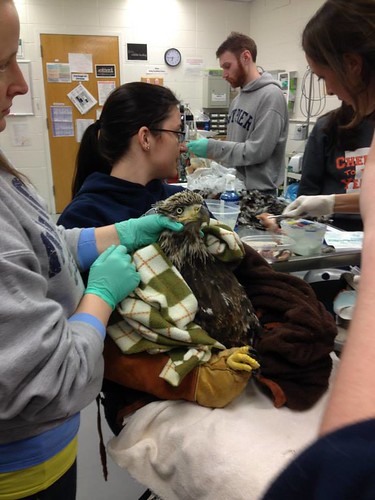 My wildlife team that I am a co-leader of recently had the honor of treating a three year old female Bald Eagle. This poor creature had a wing fracture and a deep wound near the fracture site. This type of injury required intense medical care – which the eagle was less than thrilled about. Eagles are nine pounds of anger with a six foot wing span. To restrain her and administer medication was a three person job. One person would blind her with a towel and grab her talons. Once she was safely pinned in her cage, the second person would come and “hood” her and hold her head so she couldn’t bite anyone. The third person would then help maneuver the blanket to “burrito” the eagle, preventing her from unleashing her wings while we administered medications. If my team wasn’t communicating clearly and effectively with each other, someone could have been seriously injured. Instead, she was successfully sent to the rehabber and everyone was injury free.
My wildlife team that I am a co-leader of recently had the honor of treating a three year old female Bald Eagle. This poor creature had a wing fracture and a deep wound near the fracture site. This type of injury required intense medical care – which the eagle was less than thrilled about. Eagles are nine pounds of anger with a six foot wing span. To restrain her and administer medication was a three person job. One person would blind her with a towel and grab her talons. Once she was safely pinned in her cage, the second person would come and “hood” her and hold her head so she couldn’t bite anyone. The third person would then help maneuver the blanket to “burrito” the eagle, preventing her from unleashing her wings while we administered medications. If my team wasn’t communicating clearly and effectively with each other, someone could have been seriously injured. Instead, she was successfully sent to the rehabber and everyone was injury free.

